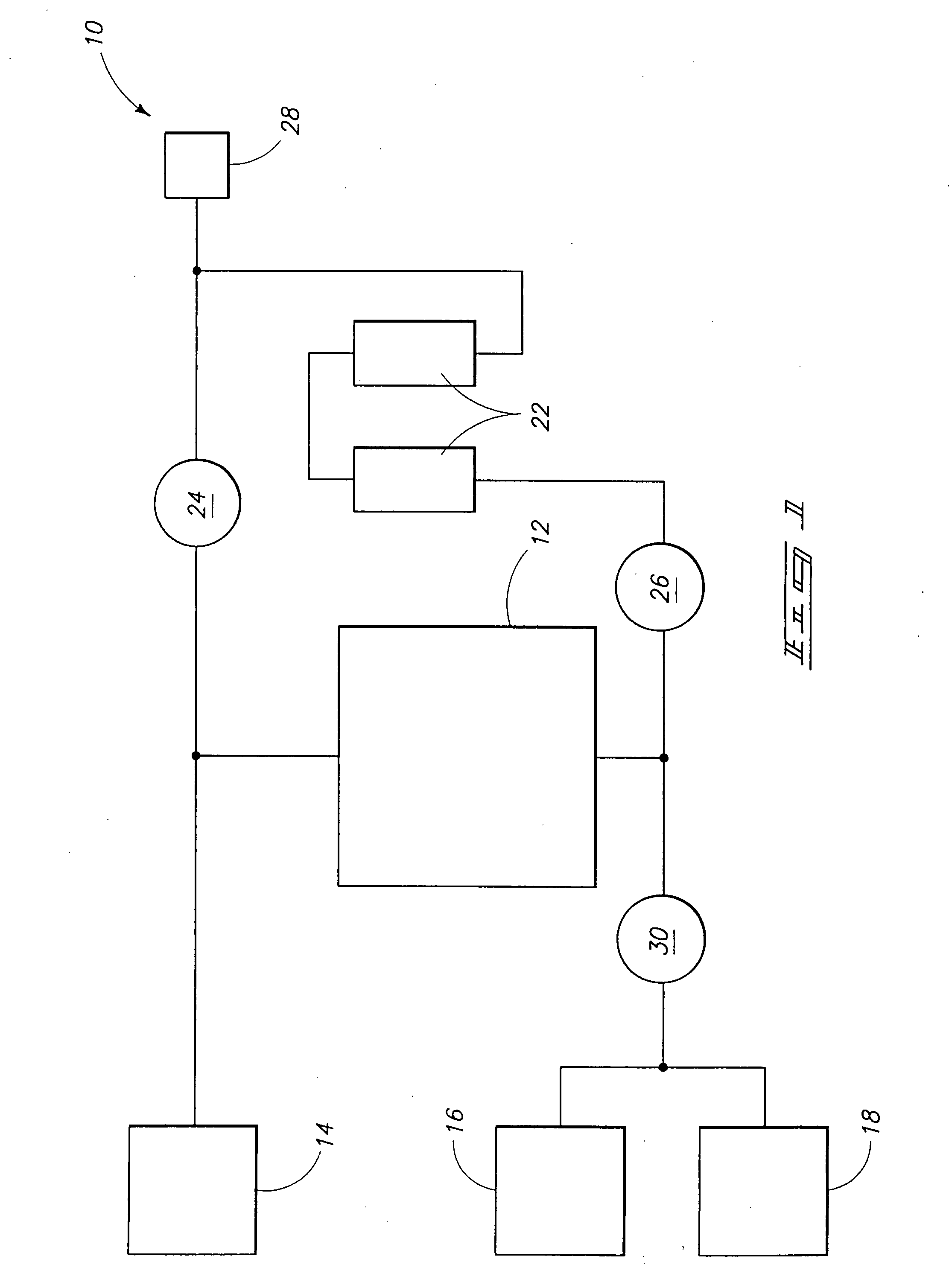Halocarbon production processes, halocarbon separation processes, and halocarbon separation systems
a technology of halogenated hydrocarbons and separation processes, which is applied in the field of halogenated hydrocarbon production processes, halocarbon separation processes, and halogenated hydrocarbon separation systems, which can solve the problems of poor yield, difficult purification of hfc-245fa from the resulting reaction mixture, and expensive raw materials
- Summary
- Abstract
- Description
- Claims
- Application Information
AI Technical Summary
Benefits of technology
Problems solved by technology
Method used
Image
Examples
example 1
Preparation of 1,1,1,3,3-Pentachloropropane
[0018] A 1 inch I.D. by 24 inch long continuous reactor was equipped with a sight glass, circulation pump, and pressure control valve. To the reactor was added 193 grams of iron wire, followed by the addition of carbon tetrachloride containing 3% by weight tributyl phosphate. The carbon tetrachloride was added to the reactor in an amount sufficient to fill the reactor to 60% of its total volume. The reactor was then heated to 105° C. and vinyl chloride was fed into the reactor until the 1,1,1,3,3-pentachloropropane concentration in the circulating product stream reached a concentration of 66% by weight. A mixture of 3% tributyl phosphate / carbon tetrachloride and vinyl chloride was then continuously fed into the reactor in a mole ratio of 1.07:1. Reaction pressure was controlled at 135-205 kPa and the product was removed by liquid level control. Analysis of the crude product indicated a 75% conversion to 1,1,1,3,3-pentachloropropane.
[0019]...
example 2
Preparation of Hexachloropropane
[0029]
TABLE 1CompoundMWMole RatioMole / ming / minVol ml / minReactantsVinylidene Chloride96.941.00000.247921.2017.38(VDC)Carbon153.822.12000.525680.7450.78Tetrachloride(CCl4)Tributyl Phosphate266.320.01730.00912.422.48Total104.3670.64ProductsHexachloropropane250.400.77000.190947.8028.12XS VDC96.800.01000.00250.240.20XS CCl4153.601.25000.309947.6029.94By-products347.710.10000.02488.585.05Total104.2255
[0030] The data of Table 1 above is acquired using the following general description. The exemplary reactor is constructed of 25.4 cm, schedule 40, 316 stainless steel pipe with 150# class flanges. The reactor interior height is 66 cm face to face, thereby having the maximum capacity of 33.4 liters. The heads to this reactor are constructed of 25.4 cm, 150# blind flanges that are drilled and have nozzles welded thereto as necessary to accommodate the piping and instrumentation of the exemplary system. Four nozzles are on the upper head and one nozzle is on the...
example 3
Dehydrochlorination of 1,1,1,3,3-Pentachloropropane
[0039] Into a 500 ml round bottom flask was added 270 grams of 1,1,1,3,3-pentachloropropane. To this was added 2.7 grams of anhydrous FeCl3 to form a slurry. The slurry was stirred under a pad of nitrogen and heated to 70° C. The solution was sampled at 30 minute intervals to give 1,1,3,3-tetrachloropropene with the following conversions and selectivity:
Time (min.)Conversion (area %)Selectivity (%)3062.521006083.001009090.799.6812094.4899.32
[0040] According to another embodiment, reactions of the present invention can be combined to perform a process for the production of HFC-245fa comprising the following steps: (1) reacting carbon tetrachloride with vinyl chloride to produce 1,1,1,3,3-pentachloropropane; (2) dehydrochlorinating the 1,1,1,3,3-pentachloropropane with a Lewis acid catalyst to produce 1,3,3,3-tetrachloropropene; (3) fluorinating the 1,3,3,3-tetrachloropropene to produce HCFC-1233zd; and (4) fluorinating the HCFC-12...
PUM
| Property | Measurement | Unit |
|---|---|---|
| molar ratio | aaaaa | aaaaa |
| molar ratio | aaaaa | aaaaa |
| temperature | aaaaa | aaaaa |
Abstract
Description
Claims
Application Information
 Login to View More
Login to View More - R&D
- Intellectual Property
- Life Sciences
- Materials
- Tech Scout
- Unparalleled Data Quality
- Higher Quality Content
- 60% Fewer Hallucinations
Browse by: Latest US Patents, China's latest patents, Technical Efficacy Thesaurus, Application Domain, Technology Topic, Popular Technical Reports.
© 2025 PatSnap. All rights reserved.Legal|Privacy policy|Modern Slavery Act Transparency Statement|Sitemap|About US| Contact US: help@patsnap.com



